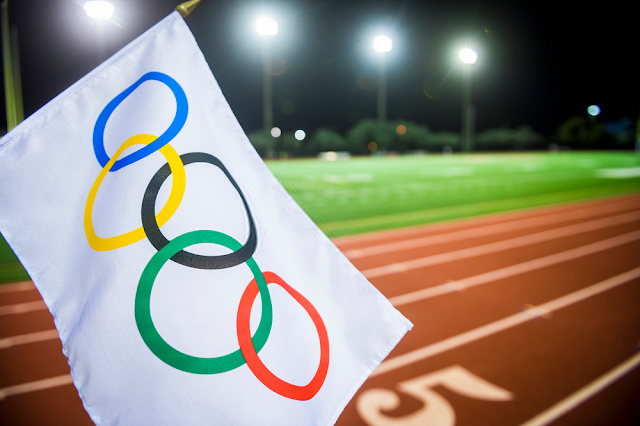The National Sports Plan has ambitious ideas, but not enough details
After 18 months of consultation, Sports Minister Bridget McKenzie revealed this week's eagerly awaited National Sports Plan.
At the same time, a review of Australia's Sports Integrity Guidelines was published - another key priority of Prime Minister Malcolm Turnbull's government, commissioned in response to concerns over gambling and match-fixing worldwide.
The review of the National Sports Plan has quickly arrived in the media, with mixed reviews. For example, the ABC called the plan "light on details" and "heavy on slogans", but praised the ambitious approach to fighting corruption in sport.
What will the new plan really do and what has the government done right?
A new mission
The first major change is the renaming of the Australian Sports Commission in Sport Australia. This body will guide the implementation of the National Sports Plan, focusing less on service delivery than system leadership and innovation.
The National Sports Plan, designated Sport 2030, also includes new goals to reduce Australian inactivity and to support top athletes with better research, testing, training, prevention and rehabilitation facilities at the Australian Institute of Sport (AIS). It is reading:
While Australia once set the benchmark for the achievement of excellence for other nations through the AIS, today we are no longer at the forefront of athletic excellence, affecting the performance of our athletes.
The plan also includes strengthened measures to combat match-fixing, including a proposal for a watchdog of the fight against corruption with significant powers.
Here are some of the main goals of the report:
1. Building a more active Australia
The Sport 2030 Plan outlines comprehensive initiatives to get all Australians moving. It also recognizes the need to promote health and sports in early childhood and in schools.
In practice, this means ensuring that all children have access to swimming programs, that digital platforms are used to promote physical activity, and that Australians who can not afford to pay sports or insurance credits receive grants and vouchers.
The plan sets a clear and measurable performance target to reduce inactivity by 15% by 2030. This is an ambitious goal. While other participation guidelines such as Play.Sport.Australia and the Physical Literacy Standard have been in place for many years, there is no more active Australia.
Afast Company, Where Success Is At Home.
2. Provide sporting excellence
This is the most controversial strategic priority after the poorly implemented Winning Edge Plan of 2012.
Lately, there have been a lot of debates about AIS status. The recent decisions of the panel to cut up to 40 jobs, sell land and buildings and stop providing services for homeless people have led many to question its strategies. According to former AIS director Robert de Castella:
What was once great, the envy of the world and the dreams of Australian sports children, coaches and caregivers, is now gone and will never return.
The new role of the AIS, as presented in Sport 2030, is to focus on being "the national high performance system leader". As such, the AIS will no longer support athletes in dormitories or camps, but "work together to develop high performance strategies that are recognized as world leaders".
To become this high performance leader, Sport 2030 plans to invest in a more technological and innovative AIS facility and work with universities to encourage new research into sports technologies, practices and training mechanisms. However, until we see these strategies and innovative partnerships, it is impossible to assess what the proposed changes might bring.
Although the plan acknowledges that the number of Australian Olympic medals has dropped since the year 2000, success is no longer measured in medals but includes:
the role of athletes as role models, their commitment to the community and the provision of a prestigious system.
Although the plan contains few details on financing and performance indicators, further details should be announced soon. This will undoubtedly benefit the National Sports Organizations (NSOs), which continue to rely on government resources to support their elite programs.
3. Maintaining the integrity of the sport
This is probably the most ambitious element of the plan, which is closely aligned with the review of the Australian Sports Integrity Report.
The plan foresees the establishment of a National Sports Integrity Commission and a National Sports Court with substantial powers to combat match-fixing, betting fraud and other integrity violations.
While many believe that the changes are long overdue, there are some concerns about the Tribunal's optional nature. The plan envisages that it is an opt-in or opt-out decision for sports federations if it has nothing to do with doping. The question then remains, how many professional sports federations decide to be supervised by a national tribunal.
There is also limited clarity about the powers of a proposed Integrity Commission and a Tribunal, with some commentators calling it National Sports and National Sports Court.
Goals and monitoring
Sport 2030 sets clear goals for measuring success in just one category - sports participation. By 2030, 15% more Australians are expected to participate in at least 150 minutes of physical activity per week.
For the remaining strategic priorities, there are no clear objectives or objective performance indicators. These should be discontinued at a later date.
Hopefully, with the published goals and objectives, AIS and Sport Australia will be able to measure and evaluate their own performance and at least give the public the opportunity to track their progress.



Comments
Post a Comment